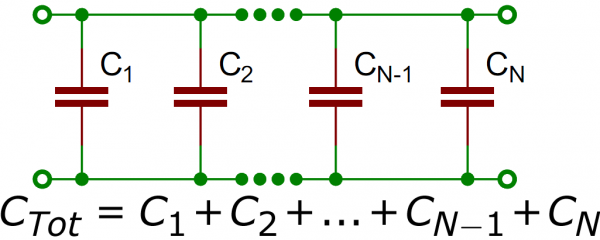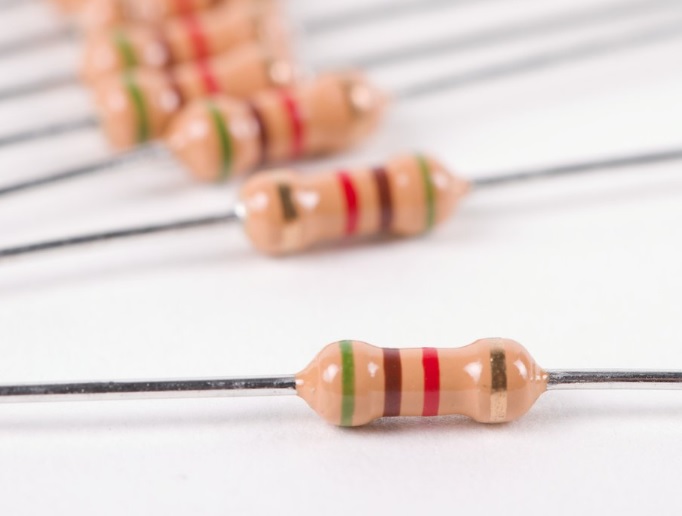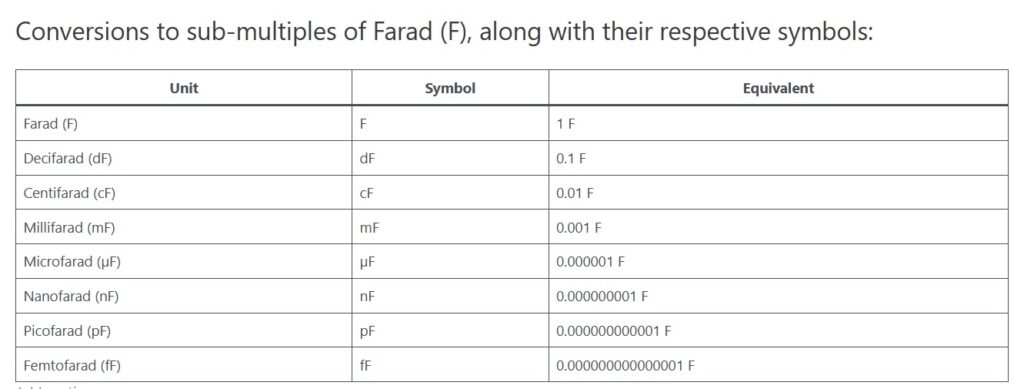Capacitors are fundamental components in electrical and electronic circuits, known for their ability to store and release electrical energy. When capacitors are connected in parallel, the total capacitance increases, as the overall effect is the sum of all the individual capacitances. This arrangement is common in many practical applications, including power supply filters and energy storage systems. This article will delve into the calculations and formulae related to capacitors in parallel, supplemented by practical and numerical examples.

When capacitors are connected in parallel, each capacitor’s positive terminal is connected to a common positive point, and each negative terminal is connected to a common negative point. The total or equivalent capacitance ( CTotal) is simply the sum of all the individual capacitances;

This can be visualized with the following diagram:

Practical Examples
Imagine you have three capacitors with the following capacitances:

To find the total capacitance:


Join students and professionals
from across the world increasing their knowledge of Electrical Engineering.
One email at a time
We never send spam or give your information to anyone, Privacy Policy here.
Numerical Example
Consider a circuit where five capacitors are connected in parallel with the following values:

Using the formula for total capacitance in parallel:

Practical Applications
1. Power Supply Filters:
In power supply circuits, capacitors in parallel are used to smooth out voltage fluctuations. For example, in a rectifier circuit, capacitors can filter out the ripple voltage, providing a steady DC output.
2. Energy Storage Systems:
In energy storage applications, multiple capacitors in parallel can store a significant amount of energy, useful in applications such as uninterruptible power supplies (UPS).
Calculations Involving Charge and Voltage

Numerical Example with Charge

Conclusion
Understanding capacitors in parallel is essential for designing and analysing circuits in various applications. The straightforward addition of capacitances simplifies the calculation, and practical applications benefit from increased total capacitance. By mastering these basics, engineers and hobbyists can effectively utilize capacitors to achieve desired electrical performance in their projects.


